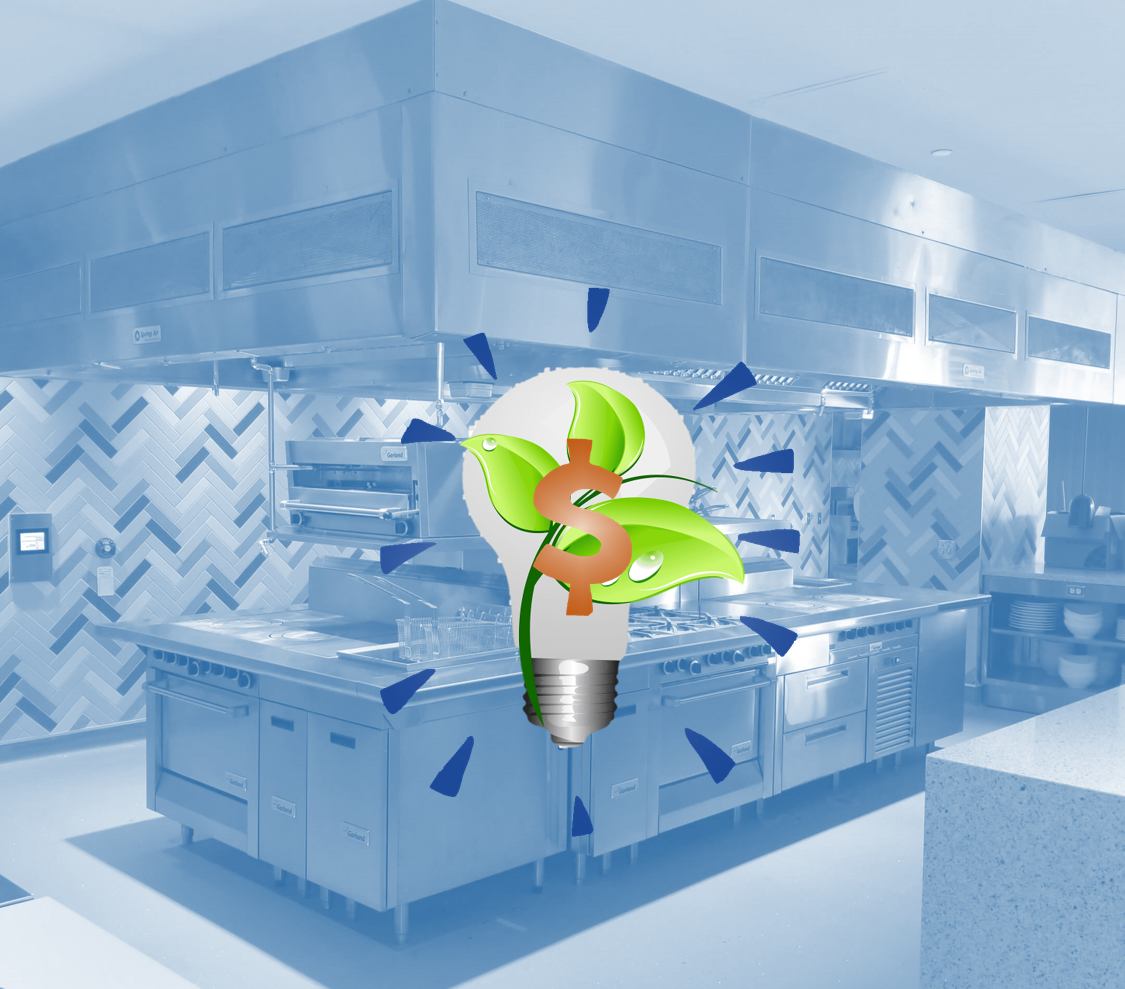The Long-Term Payoff: Investing in Energy-Efficient Hoods for Commercial Kitchens
August 1, 2023

Efficiency is a crucial element for success in the fast-paced world of commercial kitchens. These bustling culinary hubs consume substantial energy daily, leading to daunting monthly operating costs. Investing in an energy-efficient hood emerges as one of the most effective solutions to enhance sustainability and reduce expenses. Though the upfront cost may seem slightly more than a traditional hood, the undeniable long-term return on investment (ROI) through energy savings and downsized equipment makes it the smart choice.
Let’s take a closer look at the effect an energy-efficient hood can have on helping to achieve cost savings.
1. Proper Sizing and Design
Energy Efficient hoods are designed with careful consideration of the specific cooking equipment they house below them. They are tailored to match the air volumes with the heat, smoke, and grease load generated by these specific cooking appliances which allows them to efficiently capture and remove pollutants without wasting energy. Traditional hoods may be sized with an excess of air movement leading to unnecessary energy consumption.
2. Reduced CFM Requirements
CFM (Cubic Feet per Minute) is a measure of the volume of air moved by the ventilation system in a minute. Traditional hoods might require higher CFM rates to compensate for their inefficient design or to cover the potential variability in cooking loads. Energy-efficient hoods are precisely sized for the kitchen's exact needs and therefore can operate at a lower CFM rate while still providing effective contaminant capture and removal.
3. Demand Controlled Ventilation (DCV)
There is an option to pair energy-efficient hoods with demand-controlled ventilation. These systems use sensors to detect the presence of cooking from the equipment and signal the ventilation system when to ramp up or slow down airflow needs to accommodate the cooking activity. Energy is conserved during periods of lower cooking activity when the ventilation rate is reduced. This dynamic control of CFM ensures optimal ventilation while minimizing energy waste.
4. Duct Sizing Optimization
Energy-efficient hoods, by virtue of their more precise sizing, allow for optimized duct sizing. Smaller hoods that operate efficiently may allow for narrower ducts without compromising airflow performance, as well as a cheaper up-front price tag.
5. Equipment Downsizing
When a high-efficiency hood is employed in a commercial kitchen, the reduction in required CFM (Cubic feet per minute) for the exhaust system can lead to downstream benefits for both the supply air unit and exhaust fans. This often results in the use of smaller and more energy-efficient units while still maintaining the necessary ventilation performance. Smaller exhaust fans consume less energy and are more cost-effective in terms of initial investment and long-term operation. The same goes for the supply air units, as the reduced demand for fresh air allows for smaller units to be installed, which can handle the lower airflow requirements while maintaining proper ventilation and temperature control. The up-front cost of both units is therefore decreased, as well as the combined effect of the smaller units requiring less power to operate, leading to energy savings and reduced operating costs.
6. Improved System Performance
When the ventilation system is properly balanced and sized, it operates more efficiently and performs at its best. This can lead to better indoor air quality, a more comfortable kitchen environment for staff, and overall improved system reliability and longevity.
Embracing the potential of energy-efficient products in commercial kitchens is a smart move for long-term success. From tailored hoods and reduced CFM rates to optimized ducts and downsized units, these investments lead to substantial energy savings. Improved system performance ensures a comfortable environment and better air quality. Committing to energy efficiency showcases both economic and environmental responsibility, making it a smart choice to boost your bottom line and position your culinary establishment as a forward-thinking leader for years to come.